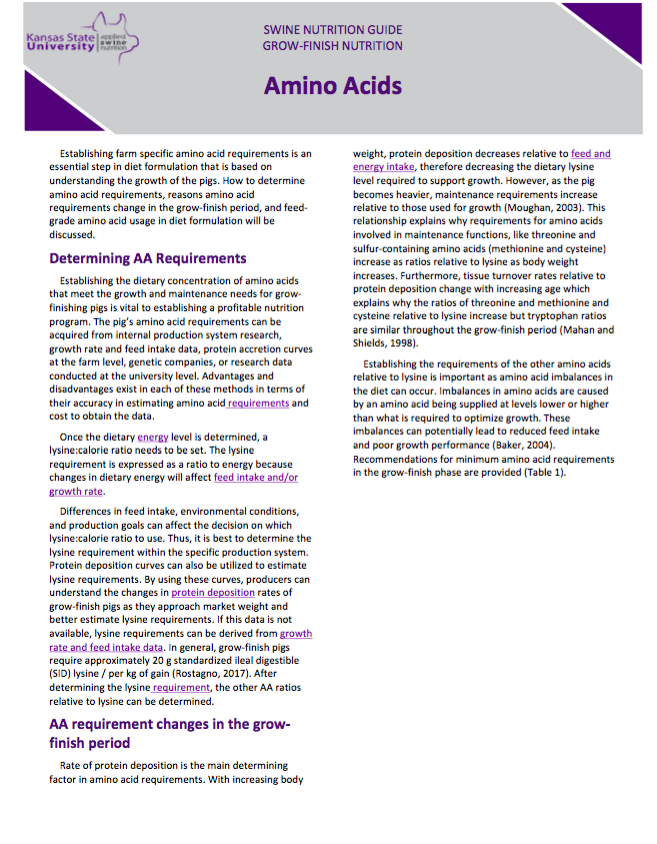AA Requirement Changes in the Grow-Finish Period
Rate of protein deposition is the main determining factor in amino acid requirements. With increasing body
weight, protein deposition decreases relative to feed and energy intake, therefore decreasing the dietary lysine level required to support growth. However, as the pig becomes heavier, maintenance requirements increase relative to those used for growth (Moughan, 2003). This relationship explains why requirements for amino acids involved in maintenance functions, like threonine and sulfur-containing amino acids (methionine and cysteine) increase as ratios relative to lysine as body weight increases. Furthermore, tissue turnover rates relative to protein deposition change with increasing age which explains why the ratios of threonine and methionine and cysteine relative to lysine increase but tryptophan ratios are similar throughout the grow-finish period (Mahan and Shields, 1998).
Establishing the requirements of the other amino acids relative to lysine is important as amino acid imbalances in the diet can occur. Imbalances in amino acids are caused by an amino acid being supplied at levels lower or higher than what is required to optimize growth. These imbalances can potentially lead to reduced feed intake and poor growth performance (Baker, 2004). Recommendations for minimum amino acid requirements in the grow-finish phase are provided (Table 1).
